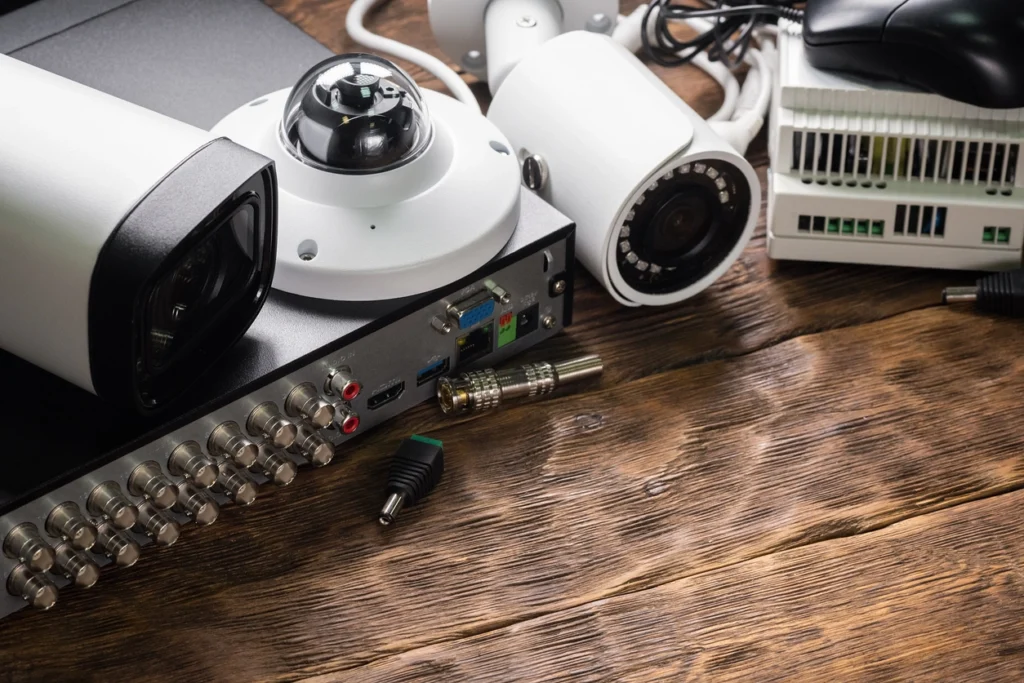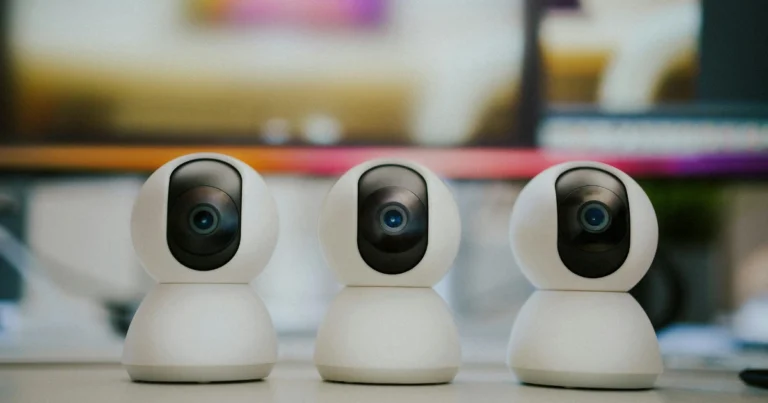In 2024, home security technology continues to evolve rapidly, offering homeowners increasingly sophisticated and effective ways to protect their properties. With advancements in artificial intelligence, smart home integration, and innovative security devices, the landscape of home security is more dynamic and comprehensive than ever before. ProTech Security Cameras, a leading provider of home security systems in Dallas, TX, is at the forefront of these innovations. In this article, we will explore the latest trends in home security technology for 2024 and how they can enhance the safety and convenience of your home.
1. Artificial Intelligence and Machine Learning
Artificial intelligence (AI) and machine learning (ML) are revolutionizing home security systems. These technologies enable security devices to learn from data, adapt to new situations, and improve their performance over time. Here are some critical applications:
Smart Surveillance Cameras
Modern surveillance cameras have AI to provide advanced features such as facial recognition, object detection, and behavior analysis. These cameras can differentiate between a person, an animal, or a vehicle, reducing false alarms and providing more accurate alerts.
Predictive Analytics
AI-powered security systems can analyze historical data to predict potential security threats. By recognizing patterns and anomalies, these systems can alert homeowners to unusual activities before they escalate into security breaches.
2. Integration with Smart Home Devices
Integrating home security systems with smart home devices is becoming increasingly seamless, providing homeowners with a unified control platform. This trend enhances both security and convenience:
Smart Locks and Access Control
Smart locks can be integrated with home security systems, allowing homeowners to lock or unlock doors remotely using smartphones. These locks can also be programmed to provide temporary access to guests or service providers, enhancing security and flexibility.
Voice-Activated Security Controls
Voice assistants like Amazon Alexa, Google Assistant, and Apple Siri are being integrated with security systems, allowing homeowners to control their security devices using simple voice commands. This integration makes it easier to arm or disarm systems, view camera feeds, and manage other security features.
Automated Lighting and Sensors
Integrating security systems with intelligent lighting and motion sensors can create a more secure environment. For example, lights can automatically turn on when detecting motion, deterring potential intruders. Similarly, sensors can trigger alarms or send notifications when unusual activity is detected.
3. Enhanced Video Analytics
Video analytics technology has made significant strides, offering more sophisticated and accurate monitoring capabilities:
Facial Recognition
Facial recognition technology can identify and differentiate between family members, guests, and potential intruders. This feature enhances security by providing specific alerts based on the identity of the person detected.
License Plate Recognition
For homes with driveways or private parking areas, license plate recognition technology can automatically log and recognize vehicles entering the property. This feature helps monitor deliveries, visitors, and potential unauthorized vehicles.
Advanced Motion Detection
Enhanced motion detection algorithms can filter out false alarms caused by non-threatening movements, such as swaying trees or passing animals. This ensures that homeowners receive only relevant alerts, improving the overall efficiency of the security system.
4. Cloud-Based Storage and Management
Cloud technology is transforming how security footage is stored and managed, offering several advantages:
Remote Access and Control
Cloud-based security systems allow homeowners to access and manage their security devices from anywhere in the world using their smartphones or computers. This remote access provides real-time monitoring and control, enhancing peace of mind.
Secure Data Storage
Storing security footage in the cloud ensures data is safe from physical damage or theft. Cloud storage providers offer robust encryption and security measures to protect data from unauthorized access.
Scalability
Cloud-based systems are highly scalable, allowing homeowners to add or upgrade security devices easily without extensive infrastructure changes. This flexibility ensures the security system can grow and adapt to changing needs.
5. Advanced Alarm Systems
Modern alarm systems are more than just loud sirens; they offer a range of features to enhance home security:
Smart Alarms
Smart alarms are connected to the internet and can send instant notifications to homeowners and security providers in case of a breach. These alarms can be controlled remotely and integrated with other smart home devices for a comprehensive security solution.
Environmental Sensors
Advanced alarm systems include sensors for detecting environmental hazards such as smoke, carbon monoxide, and water leaks. These sensors provide early warnings of potential dangers, allowing homeowners to take prompt action and prevent damage.
Panic Buttons and Emergency Alerts
Panic buttons immediately trigger an alarm and alert emergency services in case of a security threat. These buttons can be installed in strategic locations around the home and are especially useful for vulnerable individuals.
6. DIY Security Systems
The rise of do-it-yourself (DIY) security systems offers homeowners a flexible and cost-effective alternative to professional installations:
Easy Installation
DIY security systems are designed for easy installation, often requiring no special tools or professional assistance. This allows homeowners to quickly set up their security systems and customize them to their specific needs.
Modular Components
DIY systems typically feature modular components that can be easily added or removed. This flexibility allows homeowners to build a security system that fits their budget and requirements.
Subscription-Based Monitoring
Many DIY security systems offer optional subscription-based monitoring services, providing professional oversight without needing long-term contracts. This model offers a balance between self-monitoring and professional support.
7. Biometric Security
Biometric technology is becoming increasingly popular for enhancing home security:
Fingerprint Scanners
Fingerprint scanners provide a secure and convenient way to control access to your home. These scanners can be integrated with smart locks and security systems, allowing only authorized individuals to enter the property.
Facial Recognition Entry Systems
Facial recognition entry systems offer a hands-free and secure way to access your home. Program these systems to recognize family members and trusted individuals, providing a personalized and efficient security solution.
Voice Recognition
Voice recognition technology can control security devices and access systems. This technology adds a layer of security by ensuring that only authorized voices can activate certain features.
8. Wireless Security Systems
Wireless technology is transforming home security by offering flexible and easy-to-install solutions:
No Wires, No Hassle
Wireless security systems eliminate the need for extensive wiring, making installation quicker and less invasive. This is particularly beneficial for renters or homeowners who prefer not to alter their properties permanently.
Battery-Powered Devices
Many battery-powered wireless security devices ensure continuous operation even during power outages. These devices often include features such as low-battery alerts to ensure their continued functionality.
Enhanced Connectivity
Wireless systems can easily be connected to other smart home devices, creating a cohesive and integrated security network. This connectivity allows for seamless control and monitoring of all security components.
9. Smart Doorbells
Smart doorbells are becoming an essential part of modern home security systems:
Video Doorbells
Video doorbells feature built-in cameras that allow homeowners to see and communicate with visitors at their front door. These devices provide real-time video feeds and two-way audio, enhancing security and convenience.
Motion Detection
Smart doorbells often include motion detection capabilities, alerting homeowners to any activity near their front door. This feature helps prevent package theft and provides an additional layer of security.
Remote Access
Homeowners can access their intelligent doorbells remotely using smartphones to monitor their front door from anywhere. This remote access is handy for managing deliveries and interacting with visitors when away from home.
10. Professional Monitoring Services
Professional monitoring services remain a crucial component of adequate home security:
24/7 Surveillance
Professional monitoring services provide round-the-clock surveillance, promptly detecting and addressing security breaches. These services offer peace of mind by ensuring continuous protection.
Rapid Response
In the event of an alarm, professional monitoring services can quickly dispatch emergency responders to your home. This rapid response can significantly prevent damage or harm.
Customized Solutions
Many professional monitoring services offer customized solutions tailored to homeowners’ specific needs. This personalized approach ensures that all potential security risks are adequately addressed.
11. Home Automation Integration
Integrating home security with automation systems offers enhanced control and efficiency:
Unified Control Platforms
Unified control platforms allow homeowners to manage all their smart devices, including security systems, from a single interface. This integration simplifies the management of home security and other smart home features.
Automation Rules
Homeowners can set up automation rules that trigger specific actions based on security events. For example, you can program lights to turn on when motion is detected or set doors to lock automatically when the security system is armed.
Energy Efficiency
Integrating security systems with home automation can also improve energy efficiency. For instance, smart thermostats can adjust settings based on occupancy, reducing energy consumption when the home is empty.
Conclusion
The latest trends in home security technology for 2024 reflect a shift towards more intelligent, more integrated, and more efficient systems. From AI-powered surveillance cameras and biometric access controls to wireless systems and home automation integration, these advancements offer homeowners enhanced protection and convenience. ProTech Security Cameras, based in Dallas, TX, actively provides cutting-edge security solutions that leverage these trends to ensure your home’s safety and security. By staying informed about the latest developments in home security technology, homeowners can make well-informed decisions to protect their properties and loved ones in an increasingly complex and dynamic world.



